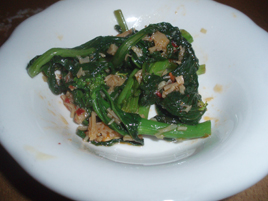Should the Star Ratings Take Price Into Account?
 Monday, November 1, 2010 at 07:59AM
Monday, November 1, 2010 at 07:59AM At the bottom of every New York Times restaurant review is this blurb, essentially unchanged for many years:
Ratings range from zero to four stars and reflect the reviewer’s reaction to food, ambience and service, with price taken into consideration. Menu listings and prices are subject to change.
The paper never explains exactly how price is “taken into consideration.” Presumably, it means that a restaurant could receive a bonus star for being an exceptionally good value, or be docked a star for being too expensive.
I’d like to challenge that. Should the rating be price-sensitive? I can state at least four good reasons why not.
1. It is Open To Manipulation. In many notable cases, restaurants have raised their prices—sometimes substantially—just after they received a glowing New York Times review. For instance, when Frank Bruni awarded four stars to Eleven Madison Park, the prix fixe was $88; a year later, it is $125. Sam Sifton awarded four stars to Del Posto just a month ago; now, they have dropped their à la carte option, locking customers into a (minimum) $95 prix fixe.
I am not suggesting that either restaurant would lose the fourth star if the critic went back today, but these are hardly isolated examples. Country raised its prix fixe from $85 to $110 after Bruni gave it three stars. Fiamma went from $75 to $95 (later partly rolled back after Bruni called them on it). At Falai, a two-star restaurant, Bruni likewise saw a noticeable price increase (beyond the rate of inflation) when he returned two years later. In a blog post, he surveyed several other examples.
Now, I do realize that anything can change at a restaurant. But a talented chef is probably going to stay talented; an attractive dining room is probably going to remain that way. Prices, on the other hand, are merely the function of what a manager types into a word processor.
2. It Depends on Factors the Critic Can’t See. According to Joe Bastianich (partner with Mario Batali at Del Posto and many other restaurants), food is only 30 percent of the price—the rest being rent, labor, miscellany, and of course profit. The critic can see the food on the plate. He generally has no idea if the restauranteur got a sweet rent deal that enables him to undersell comparable restaurants. The restaurant might be saddled with union labor, which tacks on added costs. Restaurants that are part of larger empires might have the flexibility to run at a loss for a while, an option that independent outfits don’t have. Restaurants in hotels might be subsidized.
Lower rents, of course, are the reason why the dining scene has flourished in neighborhoods not formerly known for fine dining, like the Lower East Side, the East Village, and Brooklyn. (The same was true twenty-five years ago in Tribeca, but it clearly isn’t now.) But those chefs don’t deserve bonus stars, just because they choose to locate in a low-rent district. Critics review restaurants, not rent deals.
3. It Makes Comparisons Much More Difficult. It is already hard enough to discern whether a pair of two-star restaurants are really comparable, when one four-tiered system needs to accommodate every genre and cuisine. But it only adds to the confusion when there is a mysterious price element in the mix. Is the two-star Torrisi Italian Specialties really punching at the same weight as fellow Italian two-stars Maialino and A Voce Columbus? Or is Torrisi getting a bonus for serving a bounty of pretty good food for just $50? It’s quite a bit less than you would pay at the other two places, but is it actually as good in the absolute sense?
4. Critics Should Evaluate Quality, Full Stop. Think about the other disciplines in which The Times employs critics: music, dance, film, theater, books, fashion, architecture. In no other, does the price of the product figure in the review. A critic gives an informed reaction to the product, independent of its economics. The Times doesn’t give better reviews to plays that open in cheaper off-Broadway houses; it reviews the production, not its price.
I am not suggesting that diners don’t, or shouldn’t, care what the meal costs. Of course we do. But value from the customer’s perspective depends on factors the critic can’t easily assess. For all of the above reasons, I think The Times ratings should be based on quality, full stop. The reviews, of course, would still show price ranges (as they do now). Diners can decide for themselves if the restaurant is “worth it.”












